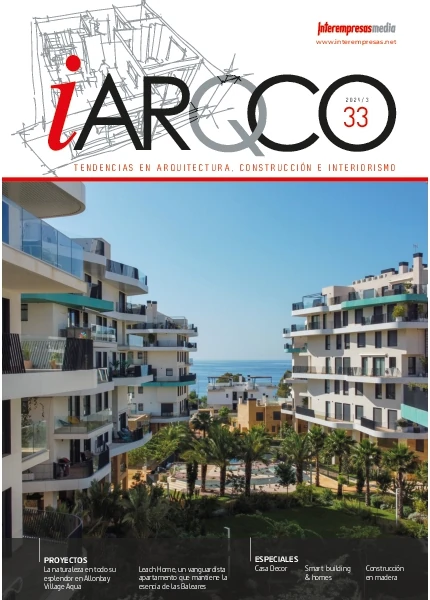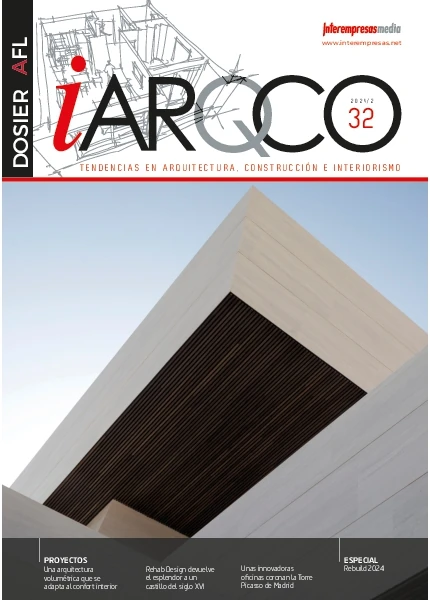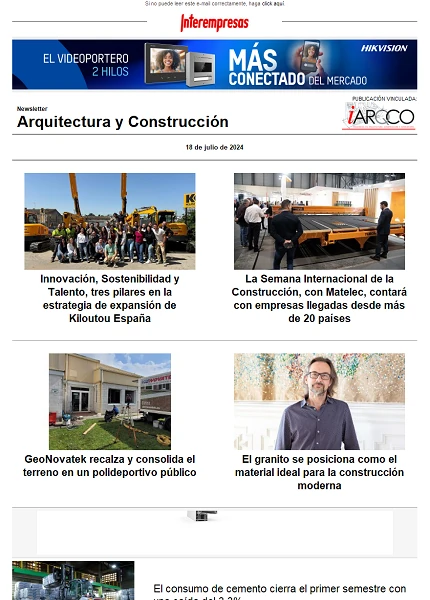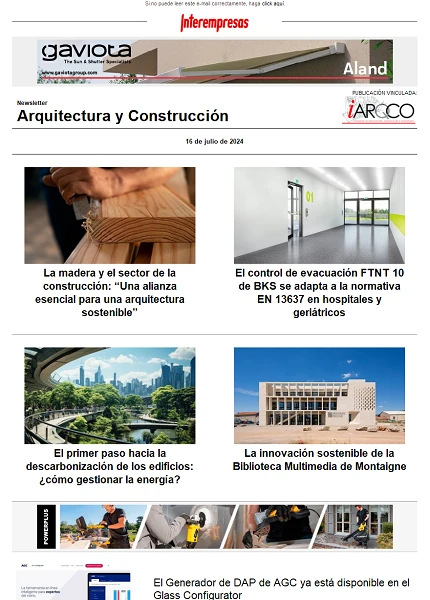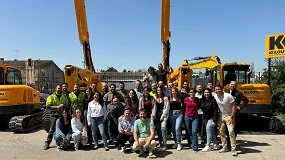“Will elaborate an international norm on the resistance of the union of hybrid pieces of metal-plastic, that will allow his use in the car industry and aeronautical sector component manufacturing sector component manufacturing”
Interview to Daniel Massó, boss of Knowledge and Innovation of Normalisation of AENOR
Which balance can do of the evento?
The global balance has resulted very positive. More than 200 experts of the sector of plastics of a veintena of countries have debated on the current and future technical norms, in the annual meeting of the international technical committee attendant of the development of technical norms in the sector of plastics in the breast of the International Organisation of Normalisation (the ISO/TC 61).
In the last session (known like Plenaria), did balance of the activities llevar by the distinct subcomités and groups of work along all the week; in total have gathered 40 groups of work of 10 subcomités distinct and besides have organised two open sessions for the public in general. It decided advance in the distinct phases of publication of, roughly, 50 projects of norm, in diverse fields of the properties of the plastics, to the time that agreed elaborate new norms; for example, on the resistance of union of hybrid pieces of metal-plastic or the resistance to the peeled of materials laminados.
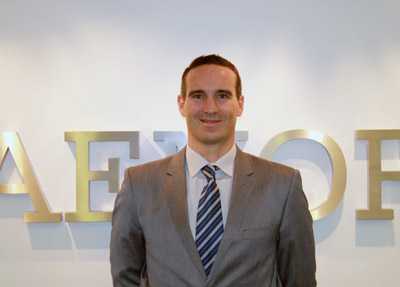
By part of Spain proposed improvements in a method of essay of cellular plastics of particular importance for the thermal sensors isolation and presented an alternative to a method of essay that will allow to achieve an important energetic saving and economic in the realisation of the same. The Spanish Association of Normalisation and Certification (AENOR) is the legally responsible entity of the development of the technical norms in Spain and exerts from 20 years ago the secretary of the subcomité 2 Mechanical Properties of the ISO/TC 61.
During the congress analysed the future norms of the sector that will have incidence in the field of the improvement of competitiveness and innovation, the Committee ISO/TC 61 has at all less than 625 norms in force, stand out some, which fields contemplate?
Is difficult to stand out an alone between so many norms. They tackle several fields of the properties of the plastics, like the mechanical properties (hardness, flexión, traction or impact, among others); the physical-chemical, the aging and also normalise the distinct types of materials, such as the cellular plastics or the thermoplastic, as well as the resistance to the fire, among others. For example, it informed of the norms projects of essay of behaviour to the fire of the plastics, that are elaborating jointly with the maritime and rail industry, by the particular importance that has in the hygiene of the transports.
Which are the main aims that pretends reach?
In spite of being little known for the big public, the norms that elaborates this committee are the fundamental base for the development of thousands of products that use in our day in day out: from the computer until the chair of the office, going through the stock exchanges or the market basket, until the mobiles and lamps. Like this, Norms like the ISO 178 of determination of the properties of flexión, quote like reference in some 200 international norms that cover crowd of fields.
Each norm has his particular aim, but in his group, the existence of these norms is totally necessary to measure the characteristics of any product that have plastic materials and therefore they contribute to do products safer, resistant, durable, recyclable, etc. Another example, the Norm ISO 5659-2 of generation of smoke is fundamental for the maritime and rail transport and quotes in the reglamentación international of these subjects. Thanks to this norm, the wagons of metre are safer.
Bioplástico And energetic efficiency seem to be the subjects of actuality in the sector, of which form incidirán the new norms in both fields?
Those were the subjects chosen for the open sessions, precisely by his interest for all the society. The applications in which the bioplásticos contribute advantageous characteristics in front of other materials are many. And the norms are the first link of a chain that contributes profits to all the society. For example, in Barcelona has advanced in norms with environingingmental particular importance, such as the projects ISO 16620 of determination of the carbon biogénico (that is to say no fossil, from renewable raw materials).
The paper in what the energetic efficiency is similar, the norms contribute the technological base to use the plastics so that it allow us save power. For example, in this meeting, the laboratory CEIS presented a method of essay to measure the percentage in volume of enclosed and open cells, of rigid cellular plastics. This allows, for example, that the ceiling of our office install a material that saves a lot of power with regard to other alternatives.
Speak us of the process of creation of a norm, that is to say, how detects the need to create an and of which form materialises ?
The norms elaborate them Technical Committees in which they participate all the parts interested in each case (manufacturers, consumers, Administration, laboratories, etc.). The industry and the parts interested are those that are used to to detect the need of his manufacturing. The norm goes through distinct phases until finally it publishes . The process to draft a norm llevar of transparent form and is promoted by a third independent part, that is AENOR. To guarantee this transparency, the norms go through a period of public availability, during which can do comments. These peculiarities of the process of manufacturing of the norms do that these have an upper applicability to the one of another type of documents.
NOTICES DM: the of the public information in the BOE is valid alone for JOINS them. I have changed the sentence so that it was applicable to all the norms.
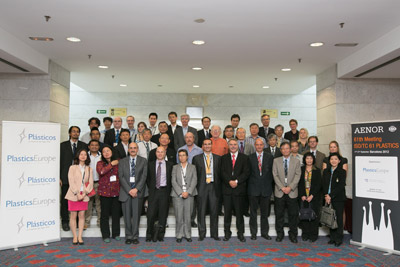
Which economic profits have the norms?
The norms are the language that speak the international markets. A clear example of his positive influence have it in the containers: thanks to that established a norm with the requirements that had to fulfil the same, today 90% of the international transport of commodities travels inside containers, having reduced the costs of the transport 35% and the time, in 84%. Besides, it estimates that 80% of the products that commercialise in the world are subject to technical norms.
The technical norms have economic profits: In Spain suppose 1% of the GDP, the same contribution that in Germany.
Until which point is determinante this meeting of the International Committee of plastics to establish the future norms?
The majority of the new proposals of norms explain and defend during this meeting, explaining his impact in other industries, by what are vital, in spite of that the greater part of the work does along the year, thanks to the tools TIC. In Barcelona, for example, accepted initiate the works of manufacturing of a new international norm on the resistance of the union of hybrid pieces of metal-plastic. These pieces used in the electronic industry are very light and resistant, but the normalisation of these essays is necessary so that it generalise his use in the car industry and aeronautical sector component manufacturing sector component manufacturing. The environingingmental advantages that achieve when reducing of weight and consumption of the vehicles are enormous.
This meeting, organised by AENOR, with the sponsorship of plasticsEurope and the CEIS treats of the 61ª meeting of this committee, with which periodicity celebrates and why has been Barcelona the stage chosen?
The committee ISO/TC 61 created in the year 1947, very shortly after the creation of ISO and at present celebrates an annual meeting in which they gather at the same time all his subcomités and groups of work. The election of Barcelona is due to that Spain is increasingly a referent in the international normalisation. For example, the past year published the international norm of Ecodiseño ISO 14006, that had like reference a Spanish norm. Besides, the Spanish norms of Gestión of the Innovation are being the base for future European norms of R&D. On the other hand, good part of the companies of the sector also are located near of Barcelona and thanks to the commitment of the sponsors wanted to facilitate them his assistance.
It describe the paper of AENOR in general and how many technical norms on plastic has published
Aenor is the responsible entity of the development of the technical norms in Spain. Also it is the entity leader in certification, since his certificates are the most valued by all the economic agents. At present, the catalogue of norms of Aenor brushes the 30.000 documents, with important solutions for the organisations, near at hand of all. In Spain, exists a technical committee Spanish, the AEN/CTN 53 of plastics and rubber, in the participate 300 experts in the manufacturing of norms. At present, the catalogue of Aenor has more than 1.100 technical norms in force on plastics and other a lot of of products realised with this material. The industry of the plastics has had traditionally some strong links with the normalisation and the certification in Spain and his association, Anaip, is member of Aenor from his creation, exerting the office the CTN 53.
Besides, Aenor carries the voice of the Spanish sectors to the international forums so that it was taken into account. At present, the Spanish experts exert 138 responsibilities in the field of the international normalisation. The Entity translates the international norms to the Spanish, what facilitates the access to these documents to a market of 500 million people all over the world.


